Do you ever feel stuck in an endless cycle of creating new funnels and offers but hardly seeing any results?
I’ve been there, too.
It took me years to discover what I needed to focus on to create high-converting sales funnels and scale my business.
So, if you’re tired of spinning your wheels and want to see impressive results for your sales funnel conversion rates, this article is for you.
I’m going to share 5 quick tweaks that can instantly level up your sales funnel conversion strategy. Honestly, I wish someone had given me these 5 strategies years ago!
These are proven sales funnel conversion boosters I still use today when working with clients, and you’re going to get the complete lowdown in this post.
But first, let me share some background info on how I came up with these 5 strategies. It all started with a realization…
Creating More is NOT Scaling
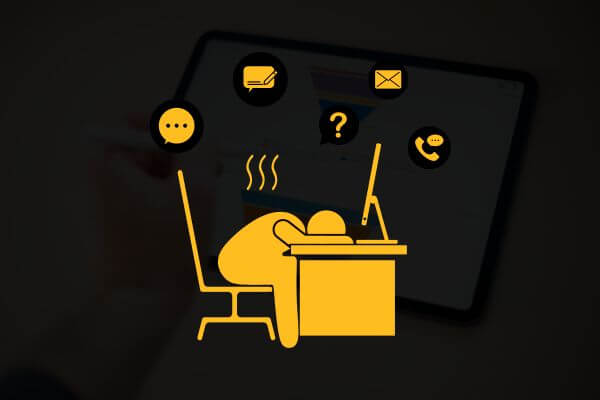
When it comes to scaling, I see the same mistake over and over—everyone always wants to create MORE.
They create MORE offers…
They build MORE funnels…
They add MORE products…
I hate to bring bad news, but that’s absolutely the WRONG way to approach scaling.
Yes, I’ve done this many times too. It’s almost like we’re wired to scale by doing more. I thought scaling meant making more of everything.
The problem? All that creation didn’t actually scale my business.
It just led to being overwhelmed and spreading myself too thin.
Here are signs you’re falling into the creation trap instead of truly scaling:
- You constantly have new product ideas, but your existing ones languish.
- You keep launching new funnels when the old ones still need work.
- You have more content than you can promote and optimize.
- Your focus is split across too many disconnected initiatives.
The real answer is so different…
I can’t tell you how much time and energy I’ve wasted over the years trying to create when I should have been OPTIMIZING offers.
I learned the hard way that scaling comes from getting more out of what you already have, not making more just for the sake of it.
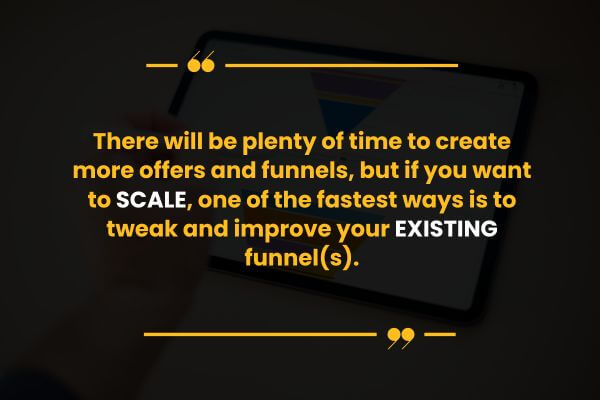
There will be plenty of time to create more offers and funnels, but if you want to SCALE, one of the fastest ways is to tweak and improve your EXISTING funnel(s).
I’ve consulted with enough business owners in my Board of Experts Mastermind to say there’s almost always profit sitting in existing funnels.
I’ve seen it dozens of times by now.
- Focus on quick tweaks.
- Focus on getting more out of what you already have.
- Focus on doing LESS and getting MORE.
One of the first things I do is find those quick tweaks that will bring in more revenue quickly – instead of building entirely new funnels.
And that brings me to the first funnel tweak…
Funnel Tweak #1: Add MORE Micro Commitments
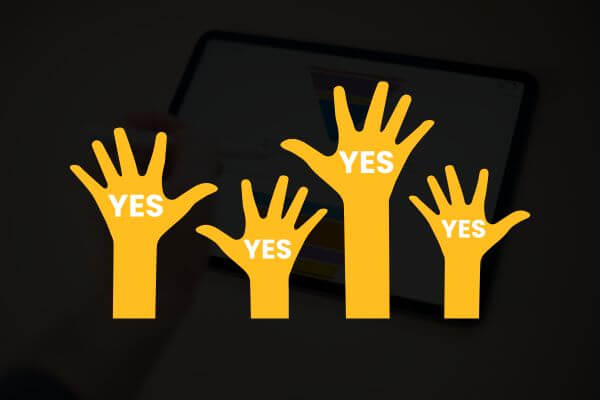
One of the most POWERFUL things you can do to create high-converting sales funnels is to get your audience to take small actions along the way. I call these micro commitments.
Micro commitments utilize the psychological principles of consistency and commitment. When a prospect takes a small action, it increases engagement and establishes commitment. This makes them more likely to take the next, more significant action you request.
It’s essentially a “foot in the door” technique. Once your prospect takes the first step, the succeeding steps become much easier. Micro commitments get your audience invested in your content and journey.
Here are ways you can add micro commitments:
- Leave a comment or answer a question below a blog post or video
- Take a quick poll or survey
- Watch a short video
- Download a resource like a guide or checklist
- Sign up for an upcoming webinar
- Refer friends/colleagues for exclusive content
Make it so SIMPLE that it’s a no-brainer for them to take action.
Now, start adding more of these “micro commitments.”
Although they seem minor, inserting more micro commitments throughout your funnel can dramatically improve engagement and conversions.
I’ve picked up a few more best practices for micro commitments you should keep in mind for your funnel. These can help maximize the impact of your micro commitments.
- Gradually increase frequency through the funnel. Don’t overwhelm people upfront with a ton of micro commitments. Start with just 1-2 very easy asks early in your funnel, like leaving a comment or taking a quick poll.
As they progress further down the funnel and engage more, steadily increase the frequency and have them take more significant actions like watching a video or downloading a resource. The progression builds momentum. - Personalize and segment messaging based on micro commitment actions. Using automation, you can tag users based on the micro commitments they complete and send targeted follow-up messages.
For example, if someone watches your product demo video, you can instantly send them a follow-up email with the next steps to schedule a consultation call. Match their messaging to their actions. - Make them relevant and valuable. Don’t just add random micro commitments that have nothing to do with your core offer. For example, if you’re promoting a weight loss program, ask people to download a sample meal plan. Or share their biggest struggle with losing weight. When the micro commitment relates closely to your offer, it provides value and gets them more invested.
- Test different types and placements to see which micro commitments perform best. Try asking for comments in other locations, like on your blog, videos, or social posts.
Test which commitment lengths work best for your audience. Try different CTAs and messaging. Use A/B testing and data to iterate on the types of commitments that drive the most conversions for your funnel.
Micro commitments are an easy but highly effective sales funnel conversion strategy. Start weaving them into your existing funnels and watch engagement shoot upwards.
Funnel Tweak #2: Change Your Journey Segmentation
Not all leads are the same, right? So why treat them that way?
Imagine if you walked into a clothing store and the salesperson just handed you the same sweater they give every customer, even though it’s totally not your style or size.
You’d find it pretty annoying and probably take your business elsewhere.
Well, that’s what marketers do when they funnel everyone through the same generic journey.
Your audience wants personalization. This is where segmentation comes into play.
What is Journey Segmentation?
Journey segmentation simply means separating your audience into different groups based on the actions they’ve taken (or not taken) in your funnel.
For example, you may segment users who:
- Have watched specific videos or pages
- Attended a webinar or only viewed part of it
- Opened X% of emails vs inactive subscribers
- Clicked on certain CTAs but not others
- Dropped off at certain stages
- Made a purchase already vs those who didn’t. And so on.
The number of ways you can segment is unlimited – get creative!
The purpose of journey segmentation is to divide users based on their level of engagement and interest. Segmentation allows you to customize messaging and steer them down the most relevant path.
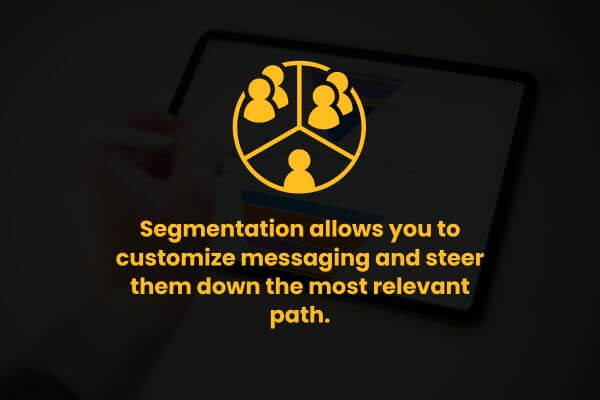
Ways to Segment Your Audience
Here are some of the most common ways to segment users in your sales funnels:
By Interests/Preferences
- Video topics viewed
- Links/CTAs clicked
- Resources downloaded
- Webinar attendance
By Email Engagement
- Open rate
- Click through rate
- Unsubscribe rate
- Email sequences completed
By Funnel Drop-offs
- Homepage exits
- Shopping cart abandonments
- Offer declines
- Form drop-offs
By Conversions
- Trial sign-ups vs non-sign-ups
- Purchasers vs non-purchasers
- First-time vs. repeat customers
Keep experimenting and analyzing your results. This will help you quickly identify how users are engaging (or not engaging) so you can address pain points in your funnel.
Throughout my funnels, I’m continually segmenting users and putting them into different “journeys” based on the actions they’ve taken. I segment things like…
- Who has clicked on different videos
- Who stayed for the entire webinar or just part of it
- Who never even showed up to the webinar or watched a video
- Who has been opening my emails
- And on and on
If they’re not activated and haven’t engaged in the funnel, I can send them personalized emails with broad subject lines like “Hey, what’s wrong?” I can send them down a completely different “track” to re-engage them.
Someone who watched the entire webinar or video will get their personalized messaging to take the next steps.
Make it PERSONAL – every step of the way. It’s like having multiple funnels in one.
Funnel Tweak #3: Diversify Your Communication Channels
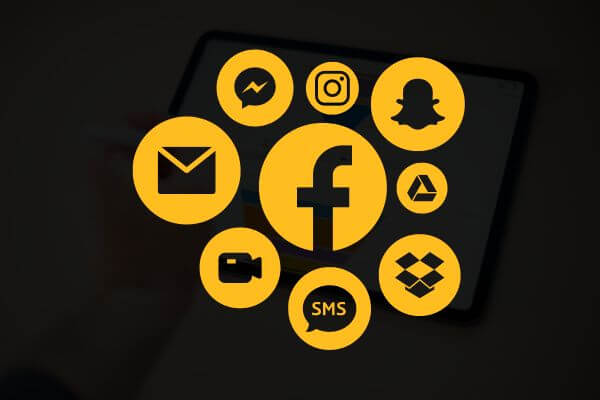
I’m always amazed by how many people only use 1 or 2 different channels—email being one of the most common.
To maximize conversions, you need to diversify your communication channels beyond just email.
Don’t get me wrong. I love email. It’s my top channel for communicating and doing my marketing campaigns. In fact, I can write a whole book about increasing sales using email marketing.
But think about it…
Different people prefer different platforms. Some people LOVE email – others never even check it.
So, if you focus on just 1 way to contact people, you’re missing out on leads that are just sitting there!
The more ways you connect, the higher your chances of being heard.
Relying on just email for your sales funnel has limitations:
- Low open rates – The average email open rate across all industries is 21.33%, meaning almost 80% never see your message.
- Preference mismatches – Many people don’t check email often but prefer other channels.
- Deliverability issues – Inboxes get crowded, emails hit spam, etc.
- Difficulty standing out – Inboxes get very noisy; how do you grab attention?
- Linear sequencing – Emails are sent and either seen or missed. They are not personalized.
Diversifying beyond email prevents you from leaving huge opportunities on the table.
So, I suggest you start increasing your presence on multiple channels.
Here are some additional channels worth incorporating into your sales funnel strategy. Remember, your choice should depend on where most of your audience lives online or what they prefer.
- SMS/Text: Open rates over 90% and great for time-sensitive offers or critical reminders.
- Social Media Messaging: Reach users on platforms they actively check for a more personal touch.
- Push Notifications: Send on-site or in-app messages to users when they’re engaged with your brand.
- Direct Mail: Physical mail can provide a fresh channel away from digital noise.
- Live Calls: The most personal touch for critical conversations and objections.
- Statement Inserts: Reach customers paying bills and invoices through your mailings.
- Retargeting Ads: Follow up on-site by retargeting across ad platforms like Facebook and Google.
- CRM Workflows: Orchestrate complex multi-channel campaigns automatically.
Now, I know it can be hard to manage multiple channels, especially if you’re a solopreneur or a small team.
But here are some ways to stay on top of additional channels without losing your sanity:
- Start with just 1-2 additional channels beyond email, such as SMS and Facebook ads. Don’t overwhelm yourself trying to do everything at once.
- Look for tools that integrate channels to set up automation and synchronize efforts. There are lots of free tools out there, so you don’t need to subscribe to expensive software immediately.
- Create templates for different channels like Instagram captions or Facebook ad copy so content creation is faster.
- Repurpose content across channels to avoid constantly making new stuff from scratch. Turn blogs into videos, social posts into emails, etc.
- Set up weekly content calendars to plan your messaging across channels ahead of time.
- Collaborate with influencers or freelancers to help create content for different platforms.
- Schedule social media posts and ads in advance using platforms like Buffer or Hootsuite.
- Block time on your calendar to focus on specific channels and optimize them individually.
- Analyze channel analytics regularly to see where your efforts are best spent. Double down on what converts.
With multiple channels, you can engage users how and where they prefer – massively increasing conversions. But you need to plan it out and get help from a virtual assistant if you need to. Trust me, investing in this part of your funnel can make a huge difference in your conversions.
Funnel Tweak #4: Use BETTER Social Proof
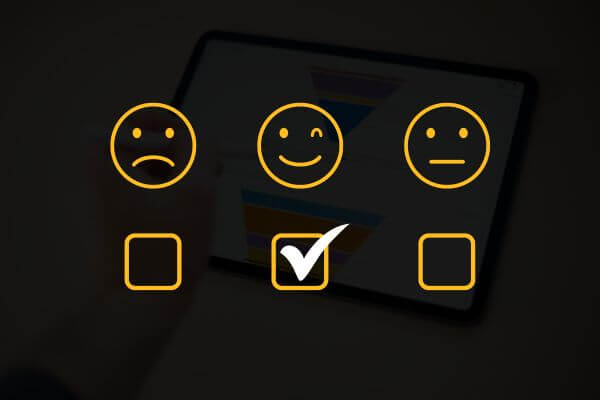
Social proof is one of the most powerful ways to boost conversions because it builds credibility and trust. But many funnels don’t take full advantage of different social proof strategies.
Look, slapping just a couple of testimonials on your landing page or throughout your funnel ain’t going to cut it anymore. You need a social proof overload to maximize results.
I’ve used the same strategy for our Expert Summit event.
We’ve had more than 170+ people leave us VIDEO testimonials. I want to OVERWHELM people with how many testimonials we have.
Then, I created a separate page on our site that’s JUST testimonials.
We also plaster our page with Facebook comments and other testimonials. The audience should feel like they’re making a mistake by NOT taking action.
Here’s why you need to go ALL-IN on social proof:
- Reduces skepticism and builds trust – Validation from others provides credibility. People are naturally skeptical of brand claims because you have an agenda to sell to them. But recommendations from actual customers don’t have an agenda. So when prospects see others validating your product, it lends credibility and helps overcome skepticism. The more proof, the more believable your product becomes.
- Triggers the bandwagon effect – People are wired to follow the herd. Psychologically, people tend to follow other people. When they see your brand has tons of happy customers and glowing reviews, it gives your product social validation. People assume if it’s good for others, it must be good for them too. So they hop on the bandwagon.
- Overcomes analysis paralysis – Social proof helps people decide. Too many choices and options cause analysis paralysis. Most buyers struggle to determine what product is best. But social proof simplifies their decision-making by highlighting the most popular, trusted option. It’s like having their work done for them.
- Addresses buyer objections – Answers unspoken concerns. Social proof directly counters common objections like “Can I trust this company?” or “Does this product really work?” When you proactively display proof that overcomes objections, it’s like you’re reading your prospect’s mind.
- Drives urgency and FOMO – Generates fear of missing out on a popular product. When prospects sense a product is in high demand and selling fast, it creates a fear of missing out. The urgency of scarcity pushes them to buy before they get left out. Strong social proof implies your offer is hot and desirable.
The more you understand consumer psychology principles in marketing, the more you realize just how powerful authentic social proof is in your funnel.
Here are some of the most effective forms of social proof to explore:
- Testimonials – Short quotes and reviews from satisfied customers.
- Video Testimonials – Authentic on-camera reviews are highly persuasive.
- Case Studies – Hard results and ROI stats from customers.
- Reviews – Ratings and feedback on platforms like Yelp, Facebook, etc.
- Media Coverage – Press mentions lend third-party credibility.
- Endorsements – Influencers can skyrocket demand within their niche.
- Certifications – Flaunt industry awards, patents, or certifications you’ve earned.
- Experts – Quotes from recognized experts.
This is really important – you need to find social proof from sources your audience sees as authentic.
For example, let’s say you have a product for stay-at-home moms; instead of a random celebrity, get a testimonial from a popular mom blogger your customers follow.
Or even better, have a real mom record a video review. Your audience will relate much more to hearing from someone who understands the daily struggles of motherhood.
The goal is to find voices your audience perceives as peers – real people just like them facing the same pain points. Social proof lands so much better when it comes from people your audience can identify with.
Focus on getting reviews and testimonials from real-life users, not just big names with no connection to your audience. That’s how you get social proof that truly resonates.
Before we wrap up this section, I want to share a few more best practices I’ve picked up from creating hundreds of social proofs for our business:
- Feature it prominently on critical pages – especially your homepage.
- Link to sources whenever possible so users can verify them.
- Refresh and update it frequently to keep it believable.
- Let the results speak for themselves – don’t hype mediocre social proof.
- Use video testimonials for higher perceived authenticity and impact.
The more credible social proof you display, the higher your conversions will climb. It’s one of the most impactful optimizations you can do to your funnel.
Funnel Tweak #5: EXTEND Your Funnel
Finally, I see way too many funnels fail because they’re over before they even start.
Almost every single funnel I see is about 7-14 days long. I hate to break it to you, but that’s just too short.
Funnel lengths of just 7-14 days are crazy short when you’re asking someone to make a big decision like:
- Investing in a pricey product
- Changing their lifestyle
- Joining a membership program
These days, I make sure all of my funnels are DOUBLE that length.
Longer timeframes give you room to nurture leads by:
- Sending helpful email sequences
- Following up across channels
- Re-engaging past leads
Here are some ideas for lead nurturing tactics to extend your funnel timeframes:
- Create a multi-touch email sequence over several weeks with educational content.
- Set up cart abandonment sequences to re-engage and offer incentives.
- Create an email re-engagement campaign for inactive subscribers.
- Use retargeting ads to stay top of mind across sites.
- Send direct mail touchpoints to stand out from the digital noise.
- Equip sales to follow up with call and email cadences.
- Re-promote to cold leads with new offers.
- Use referral incentives to keep past customers engaged.
- Send win-back offers to recover canceled/expired trials.
The longer you nurture leads, the more opportunities you have to gain customers. Don’t give up on a lead just because they didn’t buy in the initial window. Some people just need a bit more time and persistence before they convert.
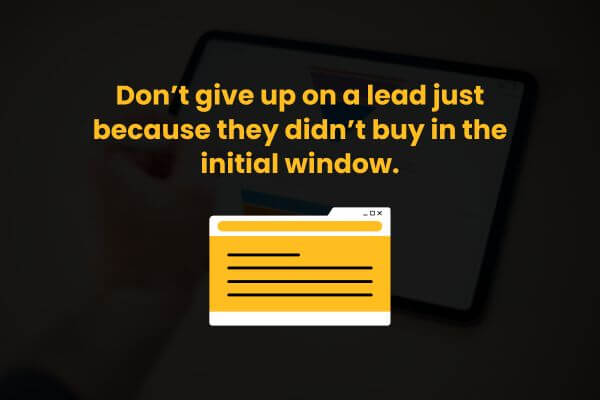
Optimize. Optimize. OPTIMIZE.
Ok, now it’s time for you to dig into your funnel and start tweaking!
Improving your existing sales funnel through strategic tweaks and optimization is the fastest path to getting higher conversions. You maximize results without needing to start over from scratch.
Focus on starting small – pick 1-2 tweaks to implement first and then build on the results. Conversion optimization is about continuous incremental improvements over time.
With the right sales funnel conversion strategy, you can quickly multiply your conversions and grow your business faster.
Get more proven tips and advice on scaling your business in our FREE Expert Scale Facebook group.
Our incredible community shares cutting-edge strategies and provides exclusive insights into what’s working now.
Join our group today, and I’ll see you on the inside!